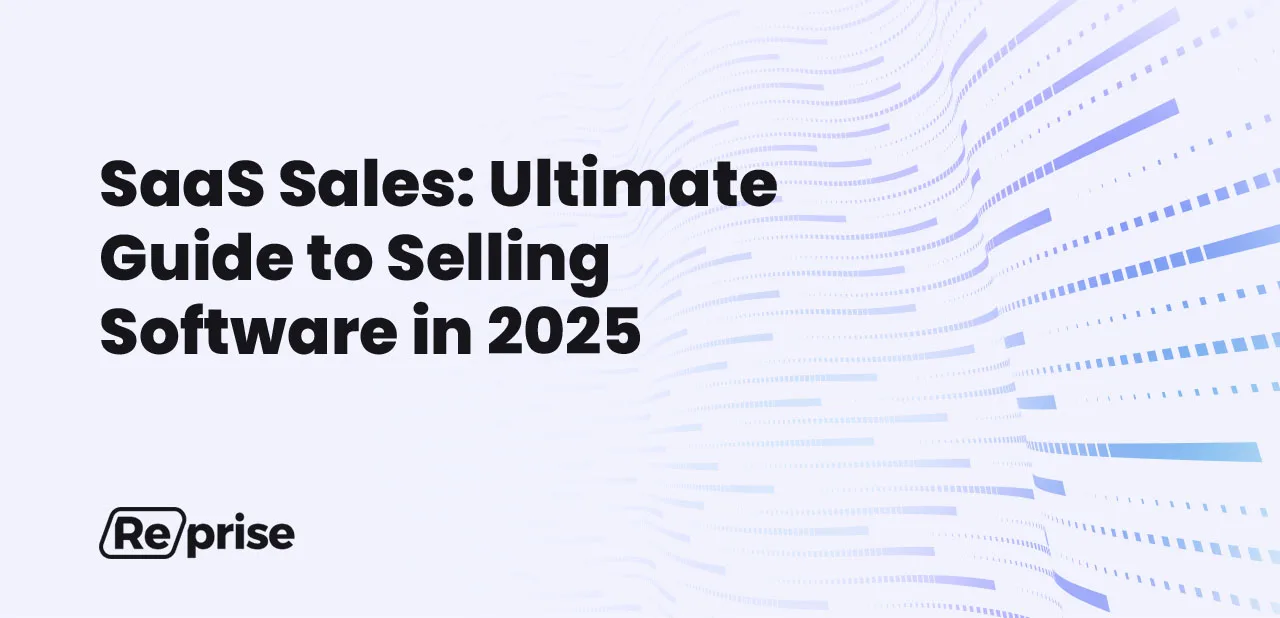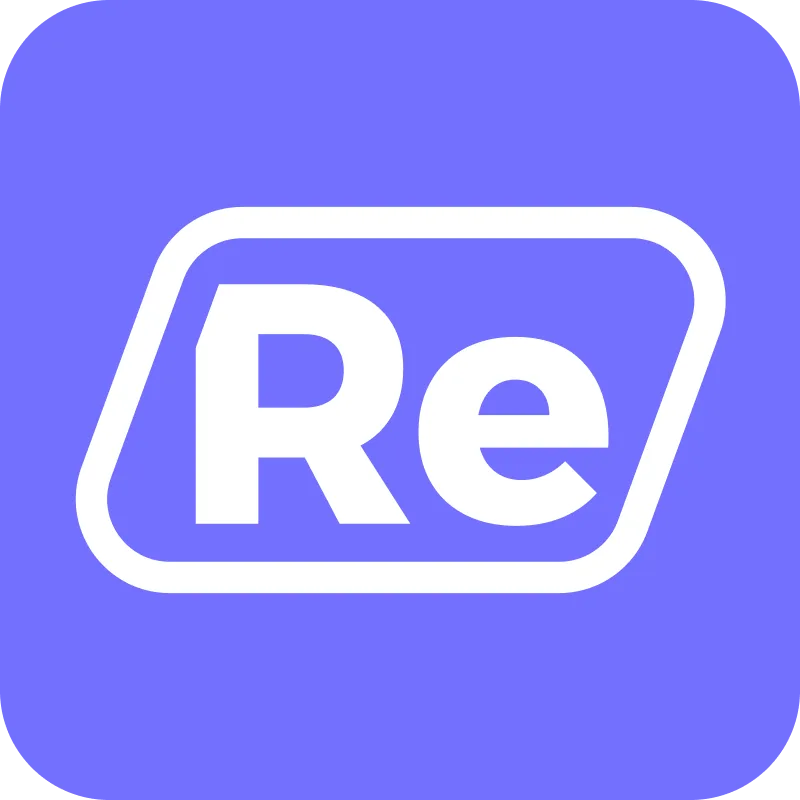Accelerate deals and increase win rates with the leading enterprise AI demo platform.
SaaS Sales Guide: How to Sell Software as a Service in 2026

December 18, 2025
Table of Contents
What is SaaS Sales?
SaaS (Software as a Service) sales involves selling cloud-based software solutions to businesses and individuals. Unlike traditional software sales, SaaS products are typically offered on a subscription basis, providing continuous access to software that is updated and maintained by the provider. SaaS sales is crucial because it aligns with the growing preference for scalable, flexible, and cost-effective software solutions.
Traditional software sales often involve a one-time purchase and installation on local hardware. In contrast, SaaS sales focus on ongoing relationships, emphasizing growth, customer retention and recurring revenue. SaaS salespeople must be adept at understanding customer needs, offering solutions that evolve with those needs, and ensuring long-term satisfaction.
The Most Common SaaS Sales Models
Product-led Growth (PLG)
Product-led Growth (PLG) is a model where the product itself drives customer acquisition, expansion, and retention. The primary features of PLG include self-service onboarding, where customers can start using the product with minimal friction, and freemium offerings, which allow basic features to be free while advanced features require payment.
Product usage data is also crucial in this model, providing insights from user behavior that guide improvements and upsell opportunities. The benefits of PLG are significant, including lower customer acquisition costs, high scalability, and organic growth through user referrals. While some companies have successfully used this model to achieve rapid growth, for complex enterprise software, it can be difficult to demonstrate immediate value to prospects in a freemium or free trial model.
Sales-Led Growth (SLG)
Sales-Led Growth (SLG) is a model where the primary driver of customer acquisition and revenue growth is the sales team. In contrast to PLG, sales professionals take a proactive role in identifying potential customers, engaging with them through personalized outreach, and guiding them through the buying process. The SLG model relies heavily on building strong relationships and understanding the unique needs of each prospect to offer tailored solutions.
Sales teams in an SLG environment often use advanced sales techniques, such as consultative selling and account-based marketing, to deliver value and drive conversions. This model is particularly effective for complex and high-value enterprise products, where personalized engagement and in-depth knowledge are essential for closing deals. SLG emphasizes the importance of skilled sales representatives and robust sales strategies to achieve sustainable growth and long-term customer relationships.
Sales Methodologies for Selling SaaS
There are a variety of ways to successfully sell SaaS software. A common thread is understanding the customer’s unique requirements or pain points, and tailoring your sales conversations to address those needs. A successful product demo can work wonders within all of these methodologies, when it comes to helping prospects understand the value of your product for their specific requirements.
SPIN Selling
SPIN Selling is a sales methodology that focuses on understanding customer needs through four types of questions: Situation, Problem, Implication, and Need-Payoff. By using these questions, salespeople can uncover the true value of their solution for the customer. The Situation questions help gather background information, Problem questions identify the issues the customer is facing, Implication questions explore the consequences of those problems, and Need-Payoff questions highlight the benefits of the solution. This method is effective in building a deep understanding of the customer’s challenges and aligning the product’s value proposition with their needs.
Challenger Sales Model
The Challenger Sales Model emphasizes teaching, tailoring, and taking control. In this approach, salespeople provide unique insights to challenge the customer’s thinking and offer new perspectives. They tailor their sales approach to the customer’s specific context and needs and take control of the sales conversation to guide the customer through the decision-making process. This model is particularly effective in complex sales environments where customers may be unaware of their needs or unsure of the best solutions. By positioning themselves as trusted advisors, salespeople can build credibility and influence.
Solution Selling
Solution Selling involves identifying customer pain points and offering tailored solutions. This methodology is highly customer-centric, focusing on solving specific problems rather than selling a product. Salespeople start by understanding the customer’s business challenges and then position their product as the best solution to address those challenges. By aligning the product’s features and benefits with the customer’s needs, salespeople can create compelling value propositions that resonate with the customer. This approach builds strong relationships and fosters long-term customer loyalty.
Gap Selling
Gap Selling aims to identify the gap between the customer’s current situation and their desired state. By highlighting this gap, salespeople can position their solution as the bridge that closes it. This methodology involves deeply understanding the customer’s current challenges and future goals and then demonstrating how the product can help them achieve those goals. By focusing on the gap, salespeople can create a sense of urgency and drive the customer to take action. This approach is particularly effective in selling innovative or disruptive solutions that offer significant improvements over existing options.
Essential SaaS Sales Metrics
Monthly Recurring Revenue (MRR)
Monthly Recurring Revenue (MRR) measures the predictable monthly revenue generated from subscription customers. It indicates business stability and growth potential by providing a clear view of the recurring income. MRR is a crucial metric for SaaS businesses as it helps in forecasting revenue and making informed decisions about scaling and investment.
Gross Dollar Retention (GDR) and Net Dollar Retention (NDR)
Gross Dollar Retention (GDR) and Net Dollar Retention (NDR) help to evaluate the health and sustainability of a SaaS business. GDR measures the percentage of recurring revenue retained from existing customers without considering any expansion revenue. This reflects how well a company retains its revenue base before upselling or cross-selling efforts. A high GDR indicates strong customer satisfaction and loyalty, with minimal churn.
To contrast, NDR includes expansion revenue — accounting for upgrades, additional features, or services purchased by existing customers. It provides a comprehensive view of a company’s ability to “land and expand,” or grow revenue from its current customer base. A high NDR signifies not only effective customer retention but also successful strategies in upselling and cross-selling, contributing to overall business growth.
Revenue Churn Rate
Revenue Churn Rate (or MRR churn) tracks the loss of revenue due to cancellations or downgrades. It highlights the financial impact of customer churn. This metric is essential for understanding the overall health of the business, as losing high-value customers or experiencing significant downgrades can have a substantial impact on revenue.
Annual Recurring Revenue (ARR)
Annual Recurring Revenue (ARR) represents the total revenue expected from subscriptions over a year. It is a key indicator of long-term business health, providing a clear picture of the company’s revenue potential. ARR helps in strategic planning and long-term financial forecasting.
Customer Acquisition Cost (CAC)
Customer Acquisition Cost (CAC) calculates the cost of acquiring a new customer, including marketing and sales expenses. It helps assess the efficiency of acquisition strategies. A lower CAC indicates that the company is acquiring customers cost-effectively, while a high CAC may suggest the need for more efficient marketing and sales tactics.
Customer Lifetime Value (CLTV)
Customer Lifetime Value (CLTV) estimates the total revenue a customer will generate during their relationship with the business. It helps in evaluating the long-term value of customers. By comparing CLTV with CAC, businesses can determine whether their acquisition strategies are sustainable and profitable.
Conversion Rate
Conversion Rate measures the percentage of leads that successfully convert into customers. It is crucial for assessing the effectiveness of the sales process. A high conversion rate indicates that the sales team is effectively engaging and converting prospects, while a low conversion rate may highlight areas for improvement in the sales approach or lead qualification process.
SaaS Sales Tips to Close More Deals
Understand Your Audience and Their Pain Points
Understanding your audience and their specific needs and challenges is crucial for successful SaaS sales. By deeply understanding their pain points, you can tailor your approach and offer solutions that resonate. Conduct thorough research, engage with prospects through discovery calls, and use insights to build a strong value proposition that addresses their unique requirements.
Build a Sales Strategy
Developing a clear sales strategy is essential for consistency and focus. Your strategy should outline your target market, Ideal Customer Profile (ICP), sales process, and key performance indicators. It should also include detailed plans for lead generation, qualification, nurturing, and closing. A well-defined strategy ensures that all team members are aligned and working towards the same goals, increasing the overall effectiveness of the sales efforts.
Create a Personalized Product Demo
Creating personalized product demos is a powerful way to engage prospects and showcase how your solution can solve their specific problems. Customize the demo to highlight the features and benefits that are most relevant to the prospect’s needs. Use real-world scenarios and examples from related customers to demonstrate the product’s value. A tailored demo not only captures the prospect’s attention but also builds a strong connection between their needs and your solution.
Operationalize Your Follow-Ups
Operationalizing your follow-ups is crucial for maintaining consistent communication with leads. Automate follow-up emails and reminders to ensure timely interactions. Use a CRM system to track and manage follow-up activities. Structured follow-ups help keep the sales process on track, prevent leads from falling through the cracks, and increase the likelihood of closing deals. Regular and personalized follow-ups demonstrate your commitment and keep your solution top-of-mind for prospects.
Common Types of SaaS Sales Software
Sales Enablement Software
Sales enablement software provides tools and resources to help sales teams sell more effectively. This includes content management systems, training platforms, and analytics tools. These resources empower sales teams with the knowledge, skills, and content they need to engage prospects, deliver compelling presentations, and close deals. Effective sales enablement software improves productivity and performance across the sales team.
Sales Forecasting Software
Sales forecasting software helps predict future sales based on historical data and trends. It aids in planning and decision-making by providing accurate revenue projections, identifying potential risks, and uncovering opportunities for growth. Accurate forecasts enable businesses to allocate resources effectively, set realistic sales targets, and make informed strategic decisions.
SaaS Demo Software
SaaS demo software allows sales teams to create and deliver interactive product demonstrations. These demos are crucial for engaging prospects and showcasing the product’s value. Demo software typically includes features for customization, interactivity, and analytics, allowing sales teams to create compelling presentations that address the specific needs of each prospect. Effective demo software enhances the sales process by making it easier to convey the benefits and capabilities of the product.
Best SaaS Demo Software for 2026
Reprise is the leading SaaS demo software designed to help sales teams create unique, personalized demos. With Reprise, you can build interactive and tailored demos that highlight the specific benefits of your product for each prospect. Reprise’s comprehensive demo creation platform helps modern presales, sales, and marketing teams scale their demo capabilities.
With Reprise, presales teams can build a powerful demo program, providing sales teams with customizable and reusable demo templates in a library based on specific customer use cases and pain points. Sales teams can customize these demo templates to make each live demo relevant to their prospect, without having to build each demo from scratch. Sales teams can also use Reprise-powered interactive demos as leave-behinds, helping engage committee decision makers on their own time.
Reprise provides analytics and insights that help sales teams understand demo performance and prospect engagement with sales leave-behinds, allowing them to refine their approach and improve their results – accelerating sales cycles and winning deals faster. By using Reprise, sales teams can create demos that not only demonstrate the product’s features, but also connect with the prospect’s specific needs, increasing the likelihood of conversion and enhancing the overall sales process.






